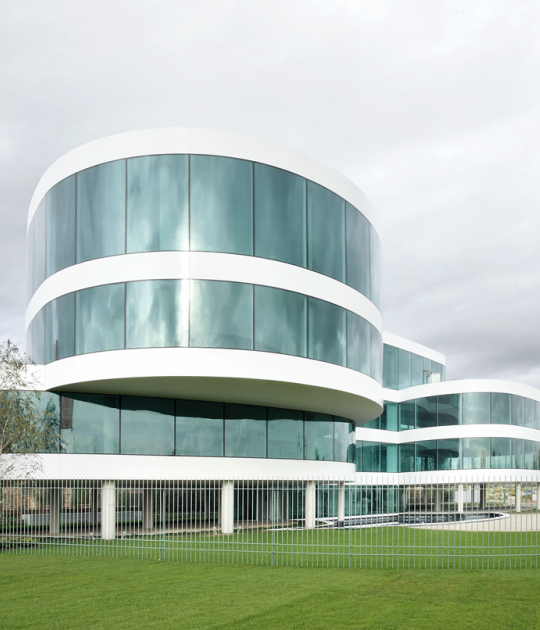On this occasion, issue number 56 is dedicated to the recent work of the Ábalos+Sentkiewicz studio. Although you may ask yourself if a studio with such a short history deserves a monograph of this quality, its content doesn’t disappoint. The invaluable quality of their projects stands out such as in the Albert Oehlen Bülher studio in Switzerland, the Lolita office building in Madrid, the housing in Orfila Street in Madrid or the Fundación Tapies in Barcelona.
As it is under construction, it will be of special interest to see the finished Estación internodal, urban park and housing towers in Logroño. Some initial images of the project were presented.
The most debatable part regards some competitions. I still don’t understand the proposal for the Centre for Dramatic Arts in Taipei. The cacophonous multiplication of the work of the extraordinary Oscar Niemeyer is perhaps the weakest project due to the huge difference between some interesting floors and some spaces that appear to belong to another project.
The last part is the texts and here Iñaki recovers the rhythm. His texts have always seemed really suggestive and brilliant to me. Easy to ready, erudite because of the thorough research he does and surprising because of the agility characteristic of an essay, like the text "La belleza termodinámica", although it’s debatable whether ecology and sustainability are the same thing. The rest are two introductory texts by Philip Ursprung and Florencio Manteca and the section Nexus closes with two articles: one previously mentioned by Iñaki Ábalos and a text that was the product of a conversation between Ábalos, Sentkiewicz and Enrique Walker.
José Juan Barba.
Excerpt from ‘Thermodynamic Beauty’, by Iñaki Ábalos:
"Sustainability has turned into a new cliché, like a paean to good intentions that brings to mind the homonymous title of Colin Rowe’s The architecture of good intentions -an indictment of the moral attitudes of modern architecture, in the sense of entertaining doubts about its technical, architectonic and merely rhetorical, not to say market-driven, nature. The present essay starts out from a simple hypothesis: only if there is genuine aesthetic debate, if there is an idea of beauty associated with sustainability, will the latter be able to appeal to architecture in a non-circumstantial way and will encourage architects to work on it. This leads us to adopt a first axiom: not to speak in moral or ethical terms about sustainability, but to limit ourselves to the purely technical and aesthetic aspects.
Origins and evolution.- the two triangles.
While the origins of an idea are always important, we should remember that the field of architectural sustainability has gone in a few decades from being a political manifesto that took root in the hippy and post-hippy context, with individualist and romantic manifestations -often inspired by Richard Buckminster Fuller, crossed with different thinkers- to being a logo worn by the big engineering firms and a few architects who originally promoted high-tech architecture. Not by chance has this displacement coincided with the change of attitude of the main electricity and oil companies, who since 1973 have gradually but persistently moved from head-on rejection to leadership in the sectors of renewable energy and building products. The phenomenon has been accompanied by a growing social, media and political interest in sustainability that is transforming, through new regulations and popular demand, the practices of architects and design techniques themselves. So, whereas architects were previously more or less focussed on the tectonic, now they are directed towards a 'bioclimatic' understanding of the design object. This conception calls for new kinds of knowledge, new experts and new ways of tackling the project."
Copyright of the text: the authors.
Copyright of the edition: Editorial Gustavo Gili SL.






























